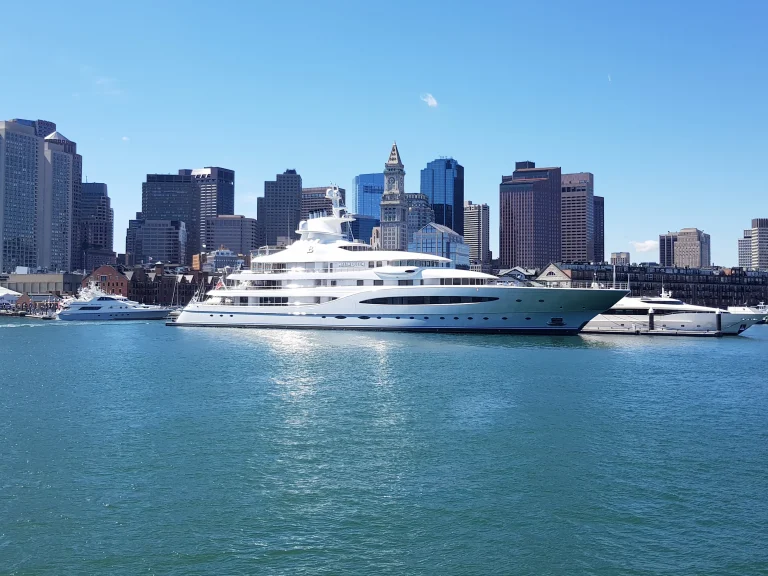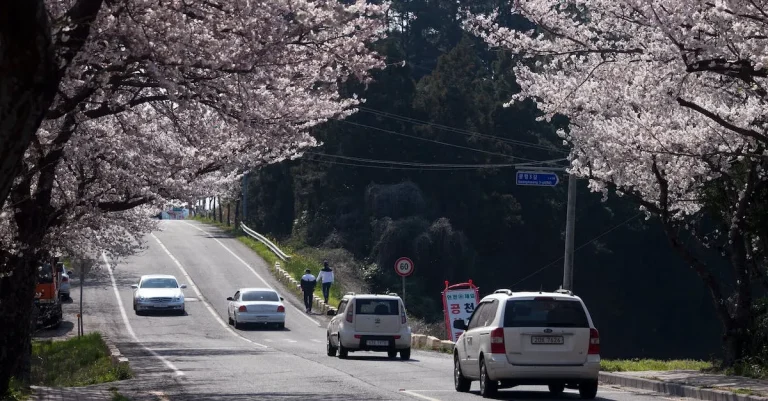Hawaii Vs Texas: How Do These Two Iconic States Compare?
With their warm climates, beautiful beaches, and unique cultures, Hawaii and Texas are two of the most iconic states in America. But how exactly do these tropical paradises stack up against one another? In this comprehensive guide, we’ll explore everything from cost of living and economy to weather and lifestyle to help you determine which of these amazing states might be a better fit for you.
If you’re short on time, here’s a quick answer: Hawaii offers stunning natural scenery and a relaxing island lifestyle, while Texas boasts a diverse culture, thriving job market, and low cost of living. It really comes down to whether you prioritize natural beauty and laid-back living or economic opportunity and affordability.
In the sections below, we’ll dive deeper into factors like the cost of living, economy and industries, climate and geography, lifestyle and attractions, and more. We’ll also highlight some key facts and statistics to help quantify the differences between the Aloha State and the Lone Star State. Let’s get started!
Cost of Living
When comparing Hawaii and Texas, one of the most important factors to consider is the cost of living. Both states offer unique experiences, but they differ significantly in terms of affordability.
Housing Costs
Hawaii is renowned for its stunning beaches and breathtaking landscapes, but it comes with a hefty price tag. The cost of housing in Hawaii is among the highest in the United States. According to Numbeo, the average monthly rent for a one-bedroom apartment in Honolulu, Hawaii’s capital, is around $2,000.
Home prices are also significantly higher compared to the national average. This is due to limited land availability and the high demand from both locals and tourists.
On the other hand, Texas offers a much more affordable housing market. Whether you choose a bustling city like Dallas or a smaller town, you’ll find a wide range of housing options at more reasonable prices.
According to Zillow, the median home price in Texas is around $200,000, which is considerably lower than the national average. Rent prices are also more affordable, with the average monthly rent for a one-bedroom apartment in Dallas being around $1,200.
Goods and Services
When it comes to the cost of goods and services, Hawaii tends to be more expensive than Texas. This is mainly due to the fact that many products need to be imported to the islands, resulting in higher transportation costs.
Everyday items such as groceries, clothing, and dining out can be pricier in Hawaii compared to Texas.
On the other hand, Texas offers a more budget-friendly shopping experience. The state has a thriving economy and a wide range of stores and retailers, allowing residents to find affordable options for their everyday needs.
Whether you’re looking for groceries, clothing, or electronics, Texas offers a variety of choices at competitive prices.
State Taxes
When it comes to state taxes, Texas holds a significant advantage over Hawaii. Texas is one of the few states in the United States that does not impose a state income tax. This means that residents in Texas have more disposable income to spend on other expenses or save for the future.
On the other hand, Hawaii has a state income tax that ranges from 1.4% to 11%, depending on income brackets. Additionally, the state also has a general excise tax, which is similar to a sales tax, ranging from 4% to 4.5%. These taxes can add up and impact the overall cost of living in Hawaii.
Economy and Industries
Economic Output
When it comes to economic output, both Hawaii and Texas are significant contributors to the United States’ economy. However, Texas surpasses Hawaii in terms of sheer size and economic power. According to the Bureau of Economic Analysis, Texas had a gross domestic product (GDP) of $1.9 trillion in 2020, making it the second-largest state economy in the country.
On the other hand, Hawaii had a GDP of $92 billion in the same year, ranking it as the 40th largest state economy.
Top Industries
Texas is known for its diverse and robust economy, with several key industries driving its economic growth. The state is a leader in the energy sector, particularly oil and gas production, making it an important player in the global energy market.
Additionally, Texas has a strong presence in industries such as technology, aerospace, healthcare, and manufacturing.
Hawaii, on the other hand, relies heavily on its tourism industry, which is a major contributor to the state’s economy. The beautiful beaches, stunning landscapes, and unique culture attract millions of visitors each year.
Apart from tourism, the state also has a significant presence in industries like agriculture, renewable energy, and military defense.
Unemployment Rates
When it comes to unemployment rates, Texas has generally fared better than Hawaii. As of July 2021, Texas had an unemployment rate of 6.2%, while Hawaii had a higher rate of 7.6%. It’s worth noting that both states experienced an increase in unemployment due to the COVID-19 pandemic, but Texas has shown a faster recovery compared to Hawaii.
One of the reasons behind Texas’ lower unemployment rate is its diverse economy, which provides a wide range of job opportunities across various industries. Additionally, the state has a business-friendly environment and attracts companies with its low taxes and regulations.
In contrast, Hawaii heavily relies on tourism, and the pandemic severely impacted the industry, leading to a higher unemployment rate. However, efforts are being made to diversify the state’s economy and reduce its dependency on tourism, with initiatives in sectors like technology, agriculture, and renewable energy.
Climate and Geography
Average Temperatures
When it comes to average temperatures, Hawaii and Texas have distinct differences. Hawaii, known for its tropical climate, experiences warm temperatures year-round. The average temperature in Hawaii ranges from the mid-70s to the mid-80s Fahrenheit (24-29°C) throughout the year, making it an ideal destination for those seeking a beach vacation or outdoor activities.
On the other hand, Texas has a more diverse climate. The state is known for its hot summers, with temperatures often reaching over 100°F (38°C). However, winters in Texas can vary significantly depending on the region.
In northern parts of the state, temperatures can drop below freezing, while southern areas generally experience milder winters.
Precipitation
Precipitation patterns in Hawaii and Texas also differ greatly. Hawaii, being located in the middle of the Pacific Ocean, receives ample rainfall throughout the year. The islands are known for their lush vegetation and stunning waterfalls, thanks to the consistent precipitation.
The rainy season in Hawaii typically occurs from November to March, but even during the drier months, brief showers are not uncommon.
On the other hand, Texas has a more varied precipitation pattern. The state is known for its semi-arid and arid regions, particularly in the western part. In contrast, eastern Texas, closer to the Gulf of Mexico, experiences higher rainfall.
Overall, Texas has a diverse climate with regions experiencing anywhere from 20 to 60 inches (50 to 150 cm) of annual precipitation.
Notable Geographic Features
Hawaii is renowned for its stunning natural landscapes and diverse geography. The state is made up of a chain of islands formed by volcanic activity. Each island offers unique features, from active volcanoes and lava fields on the Big Island to the lush rainforests of Kauai.
The iconic Waimea Canyon, also known as the “Grand Canyon of the Pacific,” is a must-visit attraction.
Texas, on the other hand, boasts a vast and diverse landscape. The state is home to the Gulf Coast, with its beautiful beaches and wetlands. In central Texas, the Hill Country region is characterized by rolling hills, rivers, and picturesque landscapes.
West Texas is known for its vast desert landscapes, including the iconic Big Bend National Park.
For more detailed information on the climate and geography of Hawaii, you can visit https://www.weather.gov/hfo/. To learn more about Texas’ climate and geography, you can visit https://www.weather.gov/ewx/.
Lifestyle and Attractions
Outdoor Activities
Hawaii and Texas both offer a plethora of outdoor activities for nature enthusiasts and adventure seekers. In Hawaii, you can experience the thrill of hiking through lush rainforests, snorkeling in crystal-clear waters, and surfing on world-renowned waves.
The state is also home to stunning national parks such as Haleakala National Park and Hawaii Volcanoes National Park, where you can witness the power of active volcanoes.
On the other hand, Texas boasts vast and diverse landscapes that cater to a wide range of outdoor activities. From hiking in the picturesque Big Bend National Park to exploring the underground wonders of Natural Bridge Caverns, there is no shortage of adventures to be had.
Additionally, Texas is renowned for its hunting and fishing opportunities, with ample wildlife and pristine lakes and rivers.
Whether you prefer the tropical paradise of Hawaii or the rugged beauty of Texas, both states offer endless opportunities to connect with nature and enjoy thrilling outdoor activities.
Food and Dining
When it comes to food and dining, Hawaii and Texas each have their own unique culinary offerings that showcase their diverse cultural influences.
In Hawaii, you can indulge in delicious dishes that fuse Asian, Polynesian, and American flavors. From fresh seafood delicacies like poke and grilled mahi-mahi to traditional Hawaiian dishes like kalua pig and poi, there is something to satisfy every palate.
Don’t forget to try the famous Hawaiian plate lunch, a hearty meal consisting of a protein, rice, and macaroni salad.
Meanwhile, Texas is famous for its mouthwatering barbecue and Tex-Mex cuisine. Sink your teeth into slow-smoked brisket, juicy ribs, and flavorful sausages, all slathered in tangy barbecue sauce. And let’s not forget about Tex-Mex favorites like breakfast tacos, chili con carne, and sizzling fajitas.
The Lone Star State knows how to satisfy even the most voracious appetites.
Whether you’re craving tropical flavors or savory barbecue, both Hawaii and Texas have a vibrant food scene that will leave you wanting more.
Famous Attractions
Both Hawaii and Texas are home to iconic attractions that draw visitors from all over the world.
In Hawaii, you can’t miss the opportunity to visit Pearl Harbor, a historic site that commemorates the events of December 7, 1941. The USS Arizona Memorial and the Battleship Missouri offer a glimpse into the past and pay tribute to the brave men and women who served during World War II.
Another must-see attraction is the breathtaking Na Pali Coast on the island of Kauai, known for its towering cliffs, lush valleys, and cascading waterfalls.
On the other hand, Texas boasts the famous Alamo in San Antonio, a symbol of the state’s fight for independence. The vibrant city of Austin is home to the iconic Congress Avenue Bridge, where you can witness the mesmerizing sight of over a million bats taking flight at dusk.
And of course, no visit to Texas would be complete without exploring the sprawling metropolis of Houston or experiencing the charm of the historic Stockyards in Fort Worth.
Whether you’re interested in history, natural beauty, or vibrant city life, both Hawaii and Texas offer a wide array of famous attractions that are sure to captivate visitors.
Conclusion
In the end, choosing between Hawaii and Texas comes down to your priorities and preferences. If you crave warm weather, natural beauty, and a relaxed pace of life, Hawaii is paradise. But if you want economic opportunity, cultural diversity, and affordability, you can’t beat Texas.
Both states have so much to offer in terms of stunning scenery, unique attractions, and welcoming cultures. By weighing the major factors explored above, you can determine which state better matches your ideal lifestyle.







